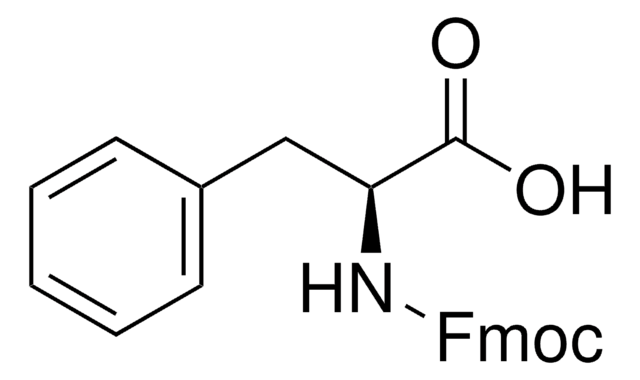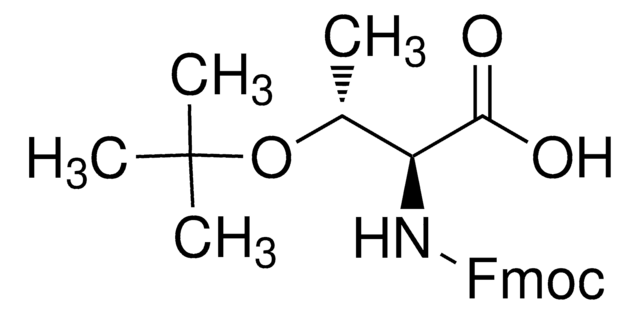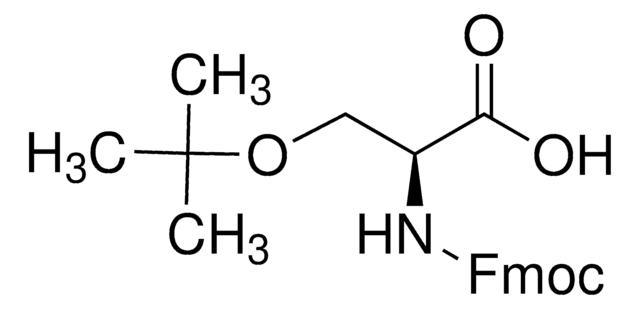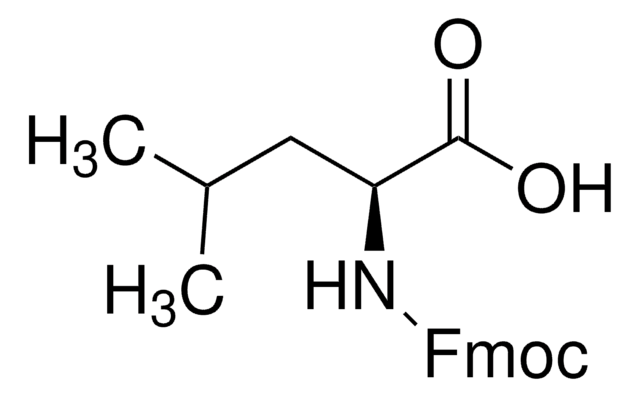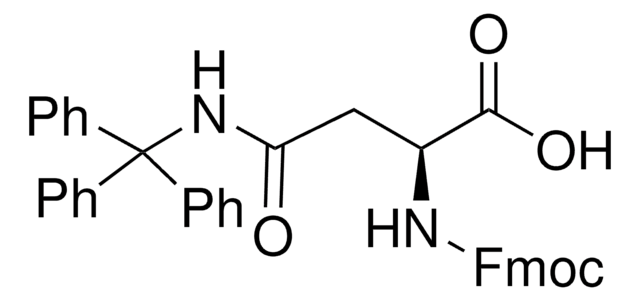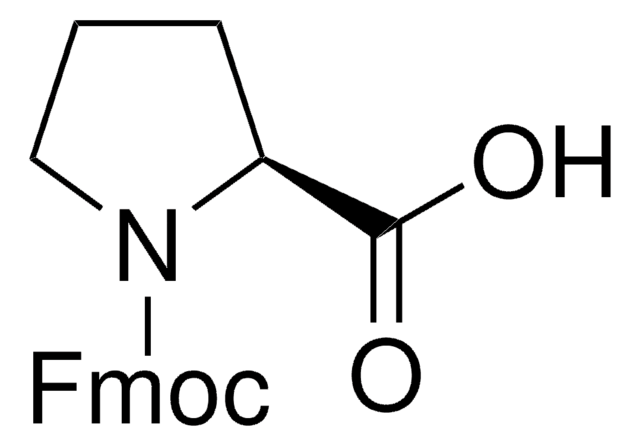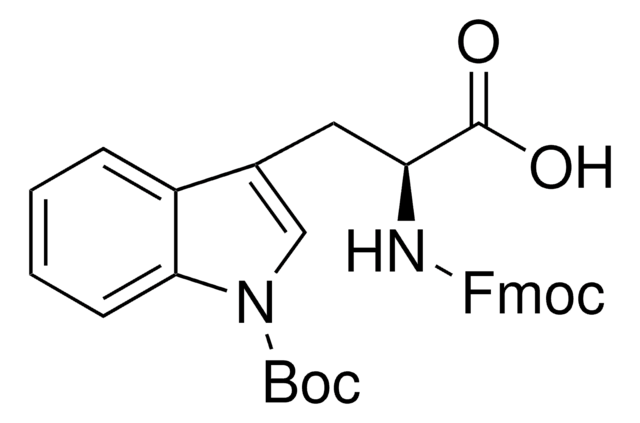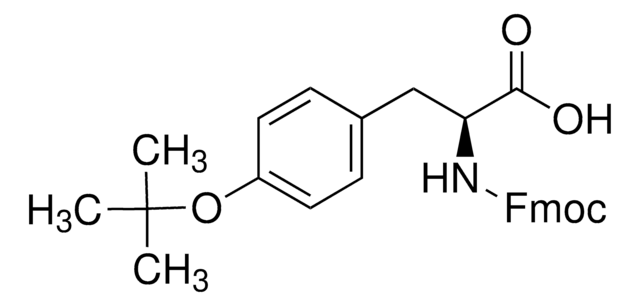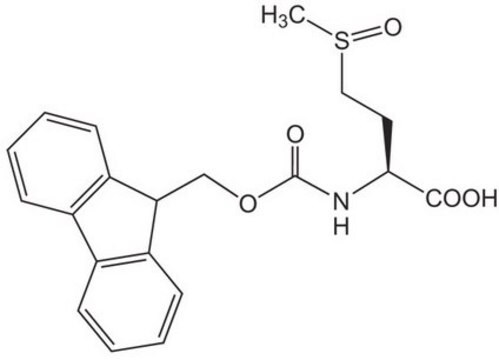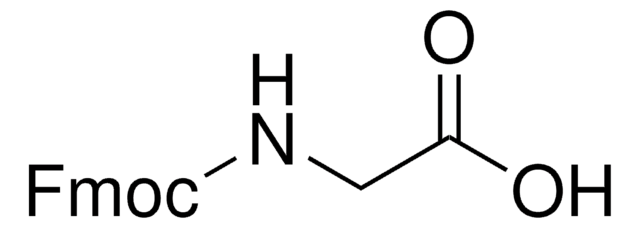47634
Fmoc-Met-OH
≥98.0% (HPLC), for peptide synthesis
Sinonimo/i:
Fmoc-L-methionine
About This Item
Prodotti consigliati
product name
Fmoc-Met-OH, ≥98.0% (HPLC)
Livello qualitativo
Saggio
≥98.0% (HPLC)
Attività ottica
[α]20/D -29.5±1.5°, c = 1% in DMF
Impiego in reazioni chimiche
reaction type: Fmoc solid-phase peptide synthesis
Punto di fusione
121-123 °C (lit.)
applicazioni
peptide synthesis
Gruppo funzionale
Fmoc
Temperatura di conservazione
2-8°C
Stringa SMILE
CSCC[C@H](NC(=O)OCC1c2ccccc2-c3ccccc13)C(O)=O
InChI
1S/C20H21NO4S/c1-26-11-10-18(19(22)23)21-20(24)25-12-17-15-8-4-2-6-13(15)14-7-3-5-9-16(14)17/h2-9,17-18H,10-12H2,1H3,(H,21,24)(H,22,23)/t18-/m0/s1
BUBGAUHBELNDEW-SFHVURJKSA-N
Cerchi prodotti simili? Visita Guida al confronto tra prodotti
Codice della classe di stoccaggio
11 - Combustible Solids
Classe di pericolosità dell'acqua (WGK)
WGK 3
Punto d’infiammabilità (°F)
Not applicable
Punto d’infiammabilità (°C)
Not applicable
Dispositivi di protezione individuale
Eyeshields, Gloves, type N95 (US)
Scegli una delle versioni più recenti:
Possiedi già questo prodotto?
I documenti relativi ai prodotti acquistati recentemente sono disponibili nell’Archivio dei documenti.
I clienti hanno visto anche
Il team dei nostri ricercatori vanta grande esperienza in tutte le aree della ricerca quali Life Science, scienza dei materiali, sintesi chimica, cromatografia, discipline analitiche, ecc..
Contatta l'Assistenza Tecnica.